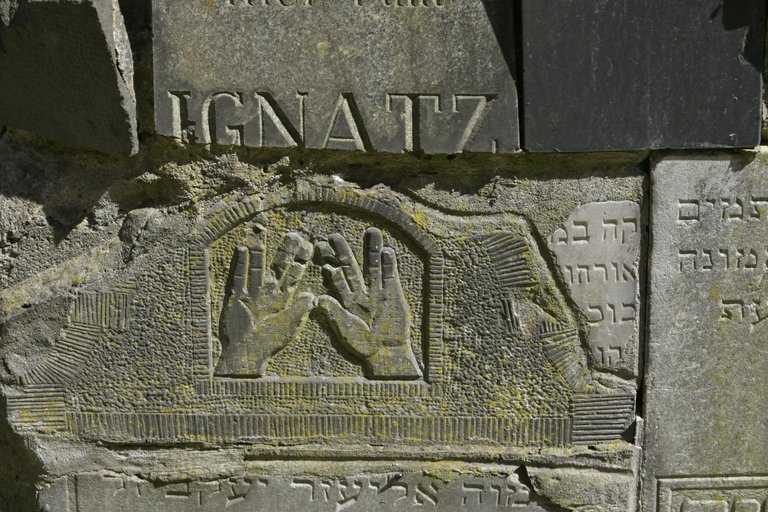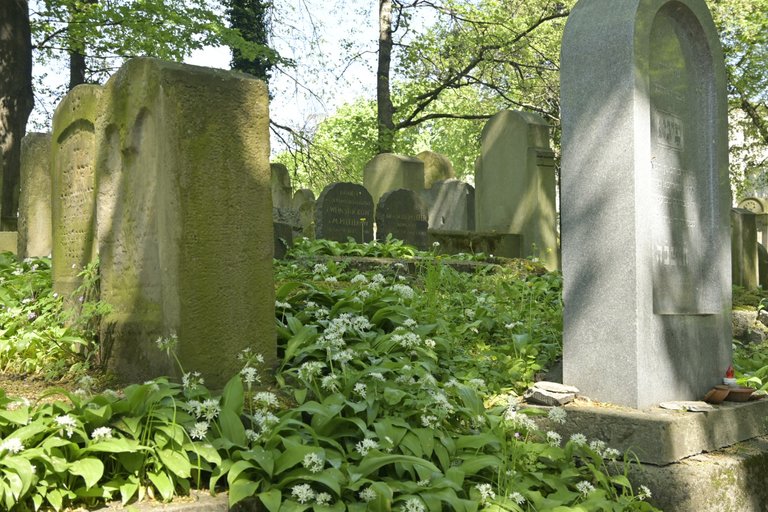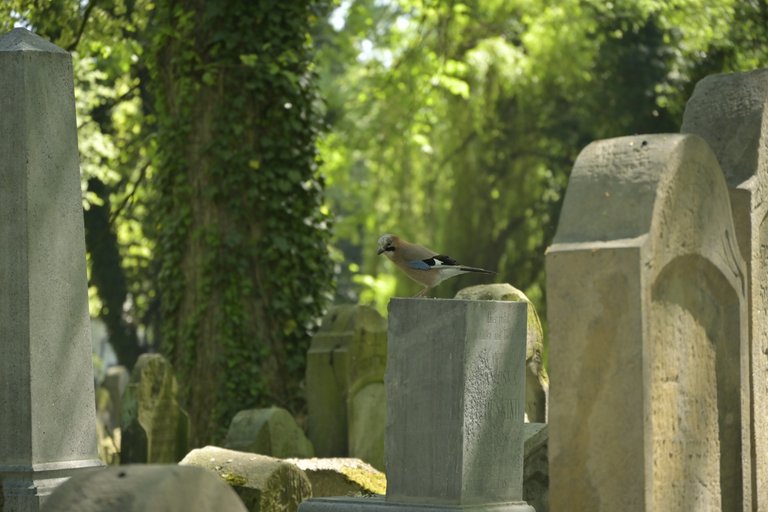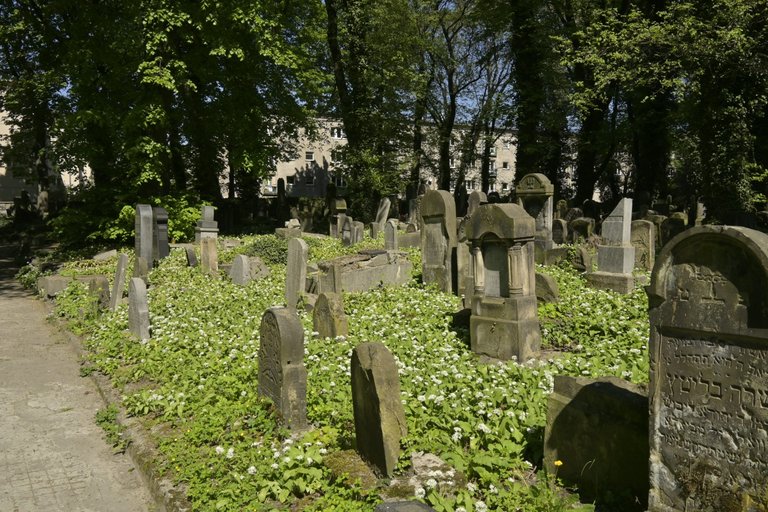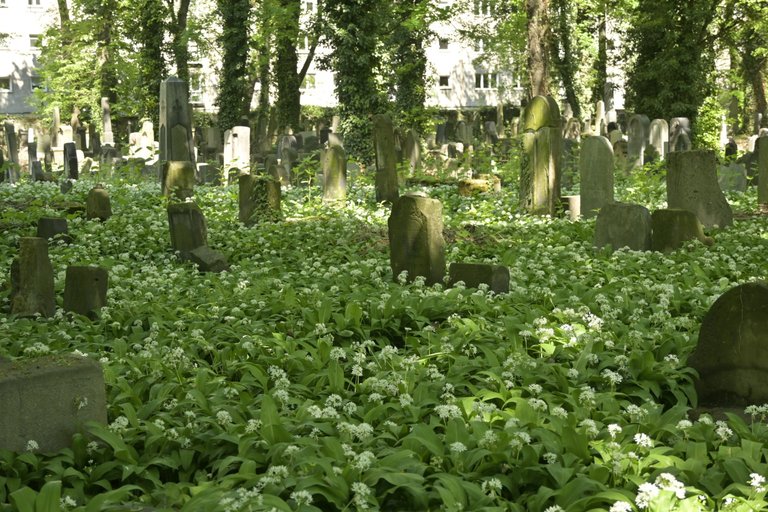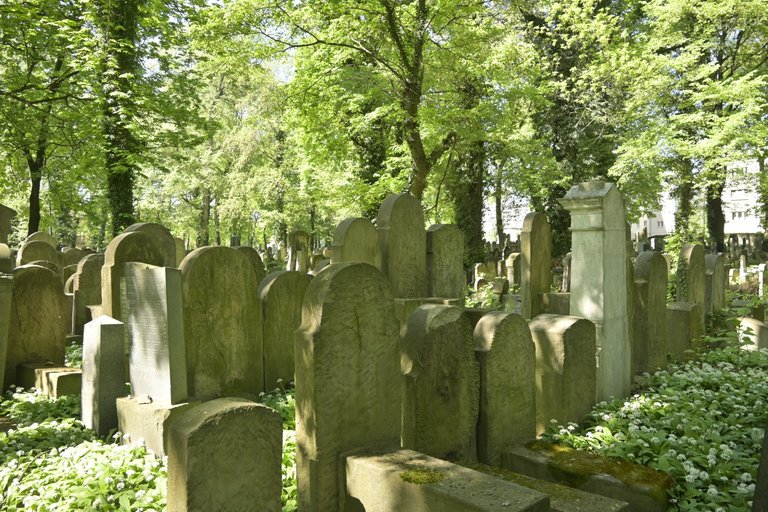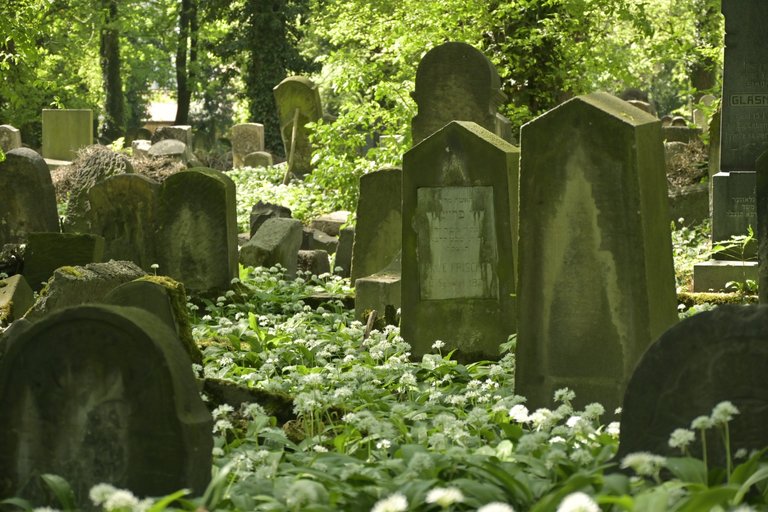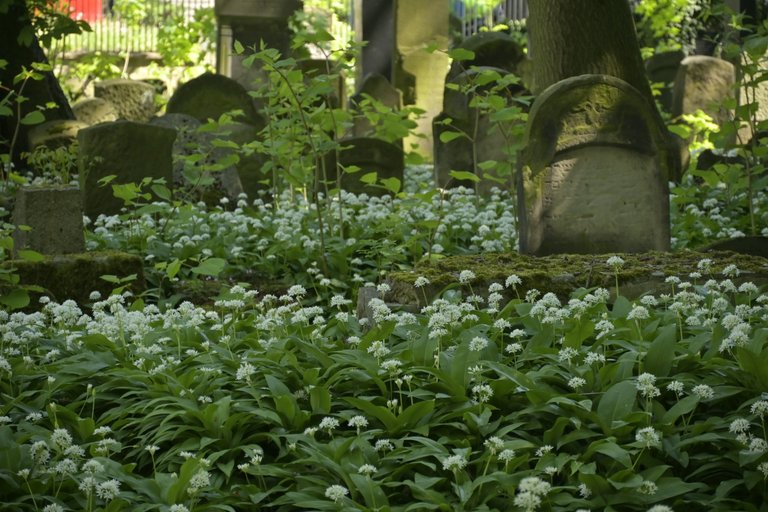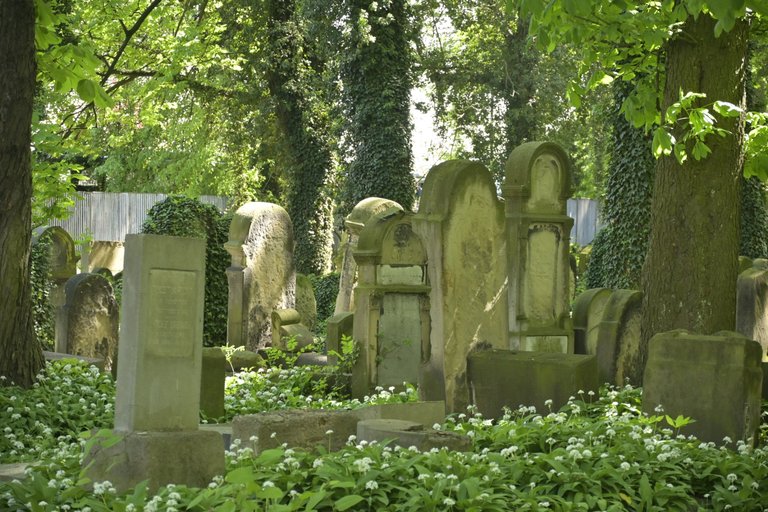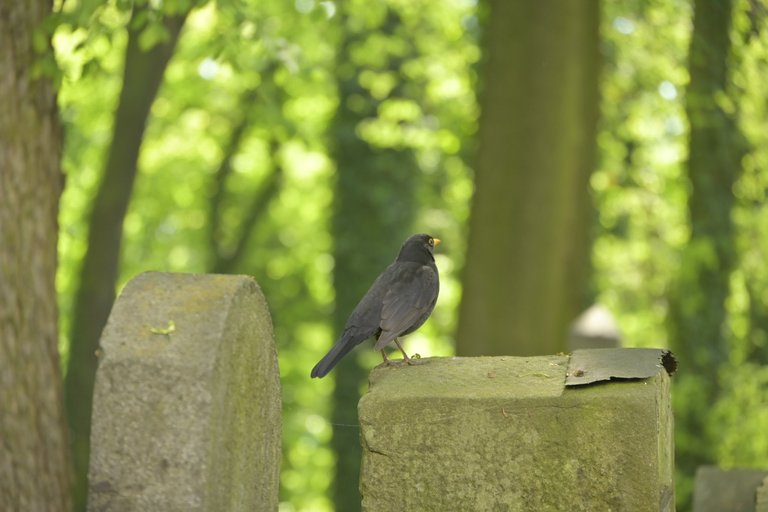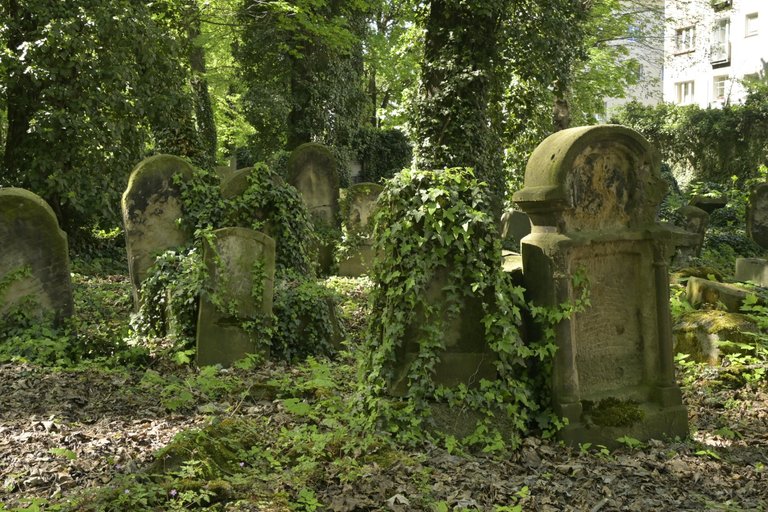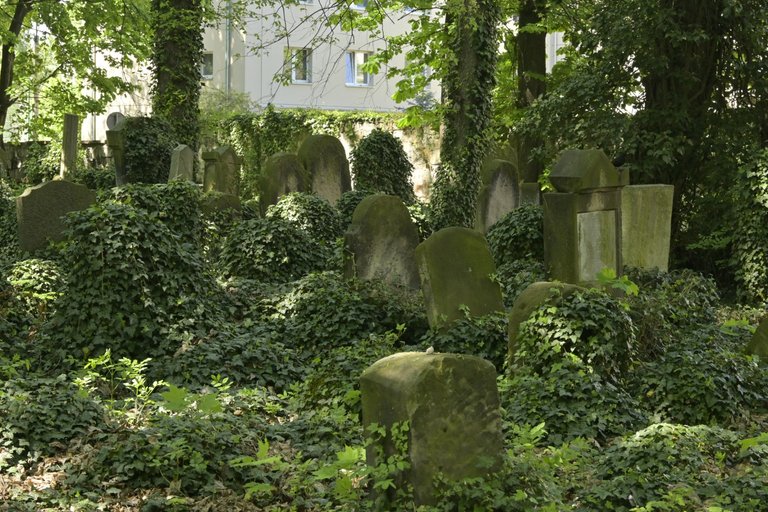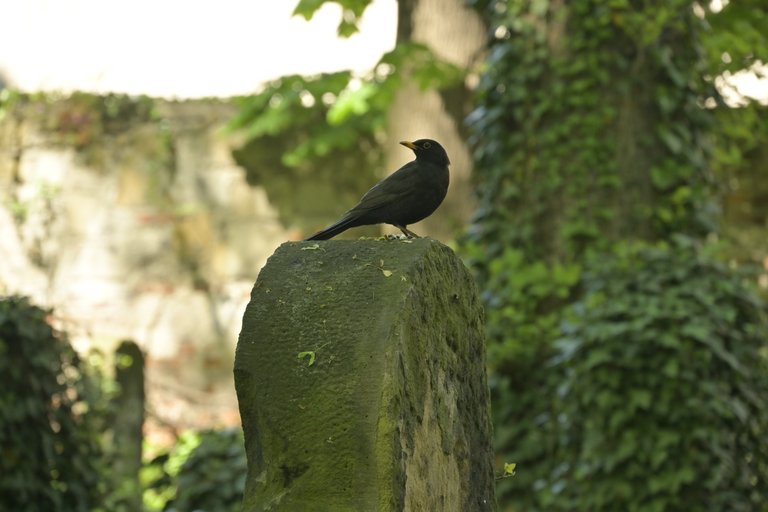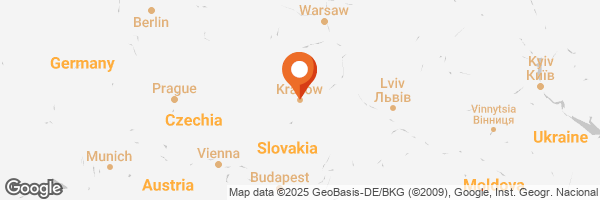[ENG]
In my head, as a result of numerous journeys around the world, a specific time-space map has been created. It contains the memory of specific places that are particularly worth visiting at a specific time of year. This map expands every year, and I noted the latest point on it a year ago.
About a year ago, riding my bike from my apartment in Podgórze to go shopping at Hala Targowa in Krakow, I passed by the New Jewish Cemetery and smelled a very distinct, very strong smell of garlic. What turned out to be? Behind the cemetery wall stretched huge swaths of blooming bear's garlic. Unfortunately, at that time I did not manage to find the cemetery's open gate, after a few days the bear's garlic had faded and I had no choice but to wait for the next year, until the bear's garlic would bloom again at the beginning of May.
And I waited. On an area of approximately 3.1 hectares located in the very center of Krakow, but still a bit off the beaten track because it is closely connected to the railway line leading from Krakow to Przemyśl since 1800, there is a Jewish cemetery. It can be visited every day, excluding Saturdays and Jewish holidays, and inside the walls you can see as many as 10,000 tombstones, the oldest preserved of which dates back to 1809. It should be noted that when dividing this large number of tombstones into the area of the cemetery, it turns out that there are over 3 tombstones for every square meter of the cemetery, and after all, you have to subtract the area for the alleys and the small square at the entrance to the cemetery. In fact, walking around the cemetery, you can clearly see how much cake there is there, how many tombstones are literally placed one on top of the other. An additional atmosphere is given to the cemetery by the vegetation, which is ruthlessly overgrowing larger and larger parts of the cemetery. Additional charm to the cemetery is given by the numerous animals, which find a quiet and peaceful enclave here in the very center of the busy city.
[PL]
W mojej głowie na skutek licznych podróży po świecie, utworzyła się specyficzna mapa czaso-przestrzenna. Zawiera ona pamięć o konkretnych miejscach, które wyjątkowo warto odwiedzić o konkretnej porze roku. Ta mapa co roku ulega rozszerzeniu, a najnowszy punkt na niej zanotowałem rok temu.
Mniej więcej rok temu jadąc rowerem z mieszkania na Podgórzu na zakupy na Hale Targową w Krakowie przejeżdżałem koło Nowego cmentarza żydowskiego i poczułem bardzo wyraźny, bardzo mocny zapach czosnku. Co się okazało. Za murem cmentarza rozciągały się ogromne połacie kwitnącego czosnku niedźwiedziego. Niestety wówczas nie udało mi się trafić na otwartą bramę cmentarza, po kilku dniach czosnek niedźwiedzi przekwitł i nie pozostało mi nic innego jak czekać na kolejny rok, aż znów początkiem maja czosnek niedźwiedzi rozkwitnie.
No i doczekałem się. Na obszarze około 3,1 hektara położonym w samym centrum Krakowa, ale jednak trochę na uboczu bo ściśle przyklejonym do linii kolejowej prowadzącej z Krakowa do Przemyśl od roku 1800 znajduje się cmentarz żydowski. Można go zwiedzać codziennie z wyłączeniem sobót oraz świąt żydowskich, a wewnątrz murów można oglądać aż 10 000 nagrobków z czego najstarszy zachowany pochodzi z roku 1809. Trzeba zaznaczyć, że dzieląc tą pokaźna liczbę nagrobków na powierzchnię cmentarza wychodni, że na każdy metr kwadratowy cmentarza przypada aż ponad 3 nagrobki, a przecież trzeba odjąć powierzchnie na alejki oraz mały placyk przy wejściu na cmentarz. Faktycznie spacerując po cmentarzu wyraźnie widać jak bardzo jest tam ciasto, jak dużo nagrobków jest postawionych dosłownie jeden na drugim. Dodatkowy klimat cmentarzowi nadaje roślinność, która bezwzględnie zarasta coraz to większe części cmentarza. Dodatkowego uroku cmentarzowi nadają liczne zwierzęta które w samym centrum ruchliwego miasta znajdują tutaj cicha i spokojną enklawę.


